1921 British Amateur champion Willie Hunter and 1926 U.S. Amateur champion George Von Elm at Rancho Golf Club in 1923. #LACC #USOpen #SoCalGolfHistory @usopengolf pic.twitter.com/rNaj4eQdYW
— Golf Historical Society (@GolfHistorical) June 5, 2023
Category: W. Herbert Fowler
The Herbert Warren Wind Golf Book Award for 2021
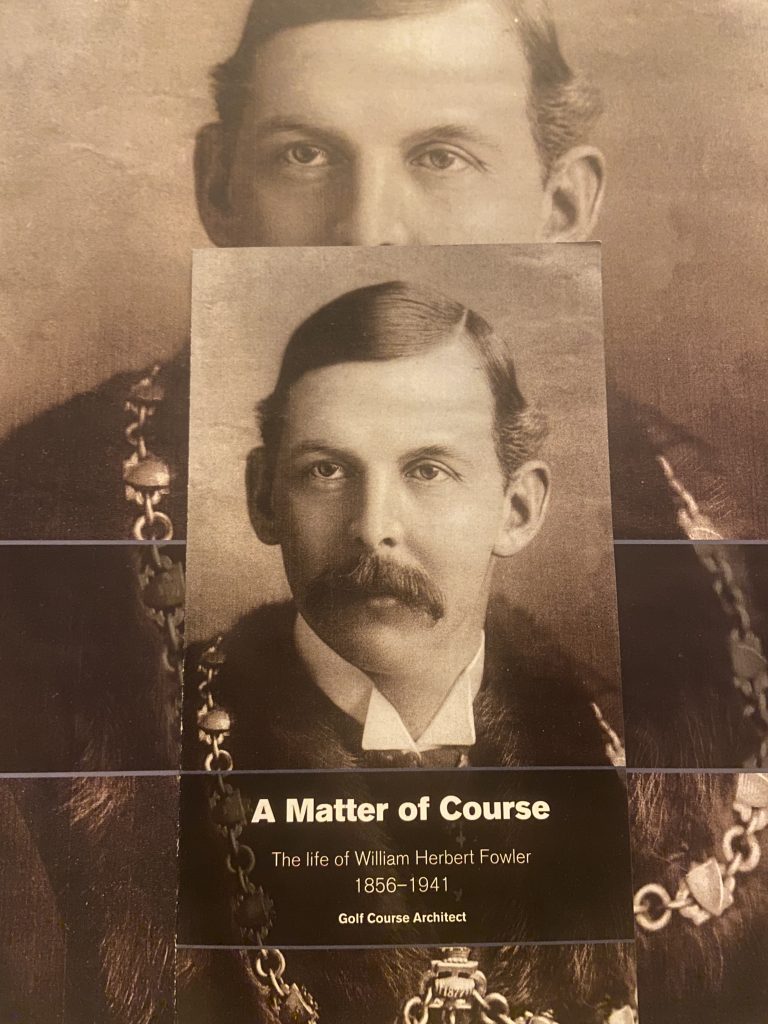
Congratulations to Derek Markham for winning the U.S.G.A.’s Herbert Warren Wind Book Award for 2021, for “A Matter of Course: The Life of William Herbert Fowler, 1856-1941, Golf Course Architect”!
My contribution to Fowler’s American Adventures came with much assistance from Philip Truett, who co-published the book with Derek!
The Opening of Los Angeles Country Club’s W. Herbert Fowler designed North course in 1921
It was with great anticipation that Los Angeles Country Club’s new North course at Beverly officially opened to members on Wednesday, August 10, 1921, making LA CC the first club in California to have adjoining eighteen hole golf courses. The new course had been “thrown open for practice,” in early June, and members had declared it couldn’t be improved.
The big event of the opening day was an exhibition match between green committee man, George C. Thomas Jr., who laid out the W. Herbert Fowler designed eighteen hole golf course, paired with Miss Doreen Kavanagh, Southern California and State amateur champion, playing against Southern California amateur champion and general manager of Catalina Island Company, Everett Seaver, and Northern California women’s champion, Miss Margaret Cameron.
Thomas and Kavanagh defeated Cameron and Seaver by a score of 3 up and 3 to play. Broken down, Thomas beat Seaver, 1 up, and Kavanagh beat Cameron 3 and 2, in what was called a keen match.
After the exhibition there was a dinner and dancing for 400. The day’s events were filmed.
The club’s Superintendent of Grounds for many years was Charles Cavanaugh. He and his crew did an amazing job building and rebuilding holes for both new golf courses in under a year, all while keeping 18 holes open for competition.
Alex J. Morrison, of Los Angeles Municipal, Catalina Island, and vaudeville, who had started at LACC as a caddy at Pico and Western, was appointed professional in July of 1921, replacing golf legend John Duncan Dunn and his team of British golfers. Morrison’s assistants were Vic Dalberto and Harry McNamara. Alex was soon back on stage and replaced at LACC by Alex Duncan, brother of earlier LACC professional James Duncan, and British golf legend George Duncan.
There was so much praise heaped on George C. Thomas Jr., for laying out the North course, that Herbert Fowler got more than a bit lost in the press releases. Fowler was a very busy man that summer, having completed the South and North courses for LA CC, the Ambassador-Rancho Golf Club, redesigns of Del Monte #1 and #2 (Pebble Beach), and designs for the Presidio, Olympic Club, Burlingame, Crystal Springs and others.
The North course still has 12-13 original holes laid out by Fowler that were reconstructed by William P. Bell to George C. Thomas Jr.’s redesign in 1928, when they also added five new holes. The 2010 Gil Hanse restoration was to the 1928 Fowler-Thomas-Bell version of the North, plus rebuilding the old Fowler par three 17th (replaced in 1928), which is now an extra hole.
On August 10, 2021, we can celebrate the design brilliance of Herbert Fowler, George C. Thomas Jr., and William P. Bell, along with the restoration by Gil Hanse. Happy 100th Birthday LA CC North!
©2021 J.I.B. Jones -golfhistoricalsociety.org
England, Canada, and California’s Willie Lock – Through The Green
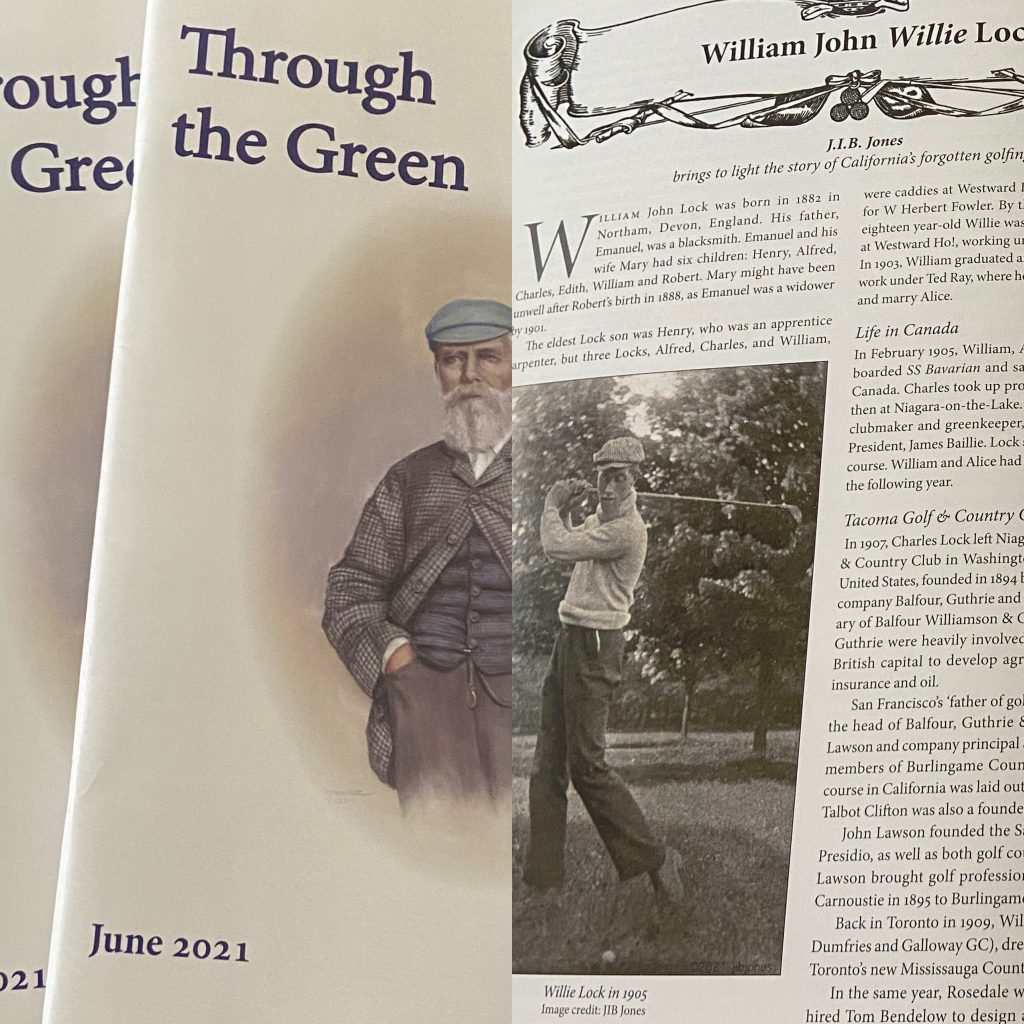
It is a wonderful honour for me to have my short story of legendary English golf professional Willie Lock published in the British Golf Collectors Society‘s June edition of Through The Green! And for those who are still patently unaware, his name was LOCK.
While researching English golf course architect William Herbert Fowler’s work in California in the 1920’s for Derek Markham’s A Matter of Course, Willie’s name kept coming up, forcing me to investigate a lost legend in English, Canadian, and Californian golf history. Willie had caddied for Fowler at Royal Devon before starting work as an apprentice under club making legend Charles Gibson.
From Royal Devon to Ganton, to Rosedale in Toronto, Riverside (CA), Los Angeles and San Francisco, Willie Lock was instrumental in raising the art of golf professional to a new level. Lock was a master club maker, having made Ted Ray’s famous driver when he was at Ganton. One of Willie’s most famous golf courses – San Francisco Golf & Country Club – is credited to Albert Tillinghast. According to his peers and golf writers of the day, Tillinghast blessed Lock’s plans when he visited the site when the course was already two years into construction.
Willie Lock was also credited with initiating the shift of golf tournaments to Red Cross benefits during World War I, as well as serving as President of the Northern California Professional Golfers Association.
©2021 golfhistoricalsociety – JIB JONES.
Protected: 110 Years of the Los Angeles Country Club at “Beverly.”
Protected: The Highest Score on a hole in a major Golf competition in Southern California
LACC’s SOUTH Course Turns 100!
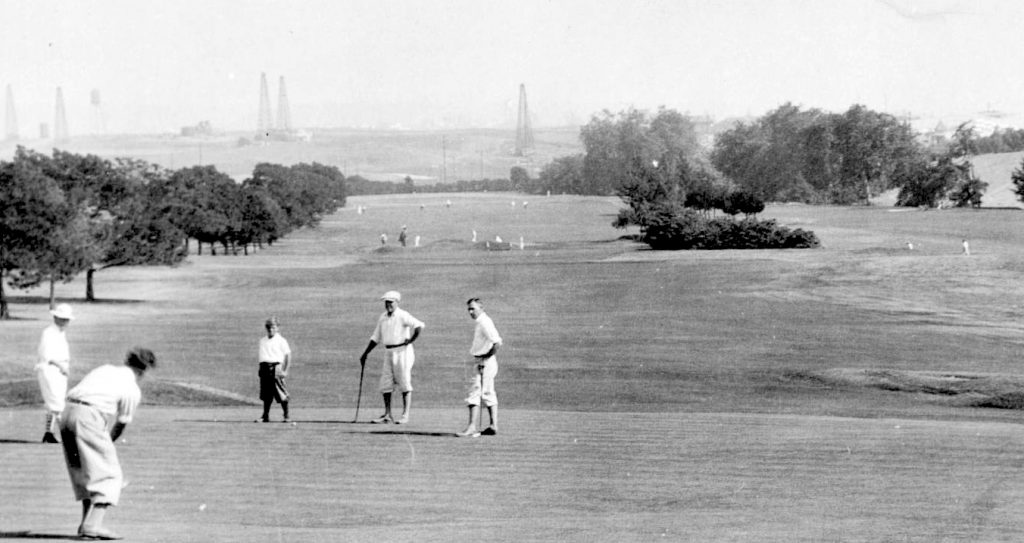
On Washington’s Birthday, February 22, 1921, the Los Angeles Country Club officially opened its new William Herbert Fowler designed South course.
Fowler was asked to keep as many of the existing grass fairways and grass greens from the original 1911 LACC Beverly links in his plans when designing two new 18-hole courses.
By 1920 the club had acquired additional land south of Wilshire Boulevard and Fowler remodeled the front nine and added nine new holes, seven of them on the new land and two north of Wilshire, to make the new South course. He also redesigned six old holes north of Wilshire, and added twelve new ones to make the North course that opened in August 1921.
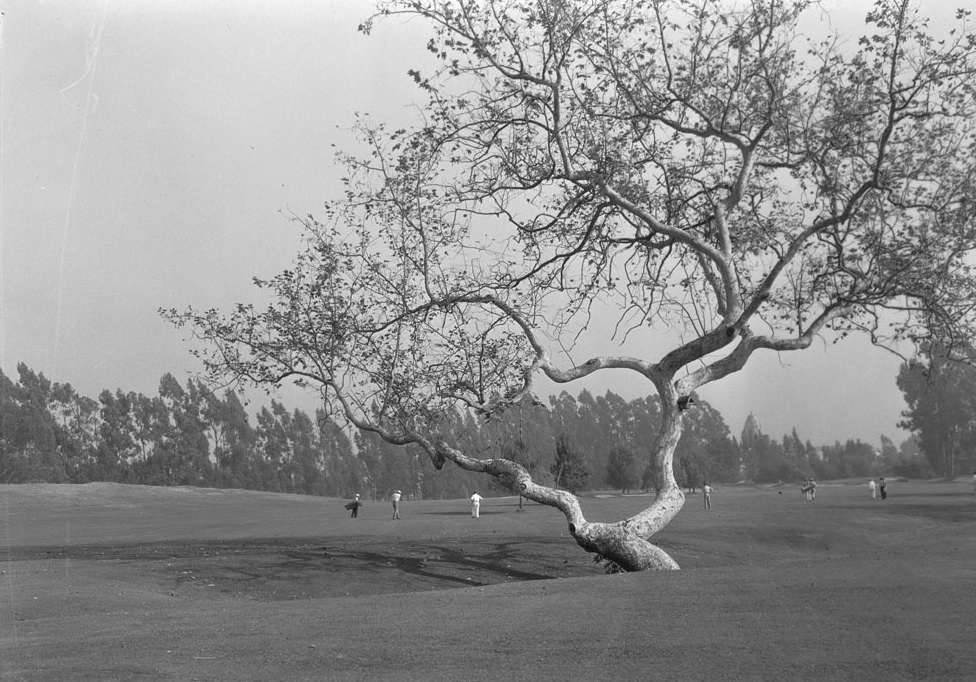
LACC, SCGA, PCGA and CGA legend Edward B. Tufts and new LACC member George C. Thomas Jr., led the green committee for both new courses and supervised construction with Greenkeeper Charlie Cavanaugh and his assistants. Another man at hand was LACC head professional and golf legend John Duncan Dunn who might have had a word to say about Fowler’s design.
(My great uncle Richard Brook worked under Dunn at LACC in 1920-21. His twin brother Tom worked at the Beverly Hills Hotel as golf instructor – small world!)
George C. Thomas Jr., wrote in Pacific Golf and Motor that, “the first nine of the South course will be nearly the same as the old lay-out, except for new greens on the second, sixth and seventh, and new tees on the eighth and the ninth.”
“The second nine will be all new holes.”
Before the South’s opening on the 22nd the final version of the Beverly course hosted the 1921 Southern California Open from February 6 to 8, using none of the new tees, greens or holes. The three-day event started with the pro-am, followed by two days of 36-hole medal play.
Unfortunately, the tournament was hampered by severe winds, up to 70 mile per hour and super dry conditions, making it nearly impossible to stop a ball from any height on the greens. It got so bad that George Thomas himself was out on the course drenching the greens to keep them playable.
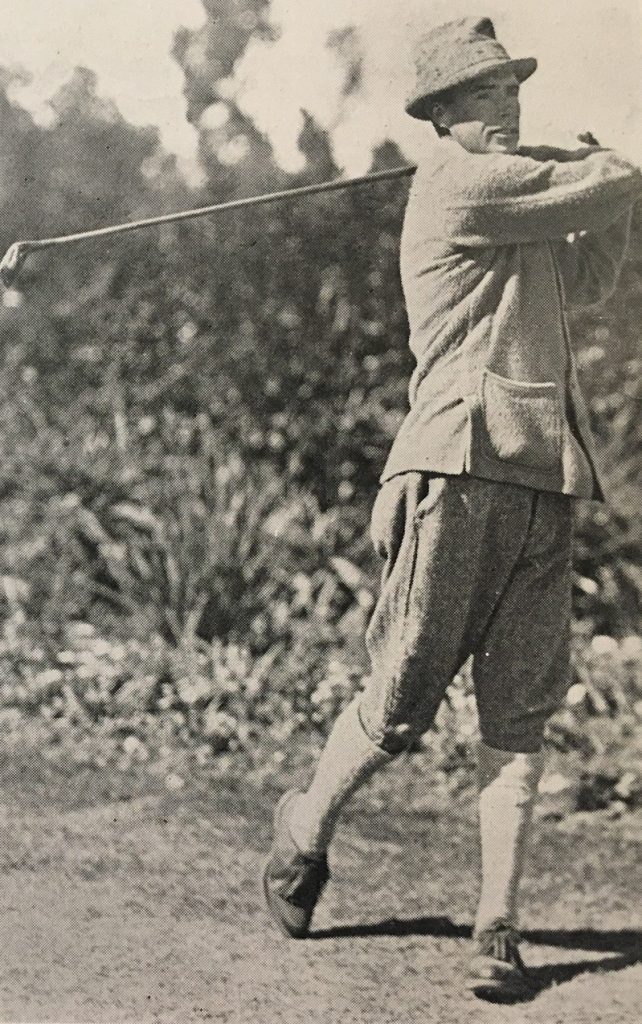
LACC’s ex-assistant professional from Carnoustie, Hutt Martin (297) won the tournament. American Eddie Loos (299) was 2nd, and LACC’s Everett Seaver (309) was low amateur finishing in 8th place overall. Leo Diegel had the low round of the tournament and claimed the course record of the South with a 70 during his 4th round. LACC member William Armstrong won the pro-am with Diegel. Armstrong donated the “bridge to the 18th.”
The new South course greens were perfect by February, but the fairways were still rock laden on the back nine and were not used in competition until after the Southern California Amateur in April.
The South course lasted through many iterations until it was redesigned in 2015 by Gil Hanse who retained parts of some original holes that we can still enjoy today! Thanks for the century!
©2021 jib jones – golfhistoricalsociety
W. Herbert Fowler at Del Monte No. 2 at Pebble Beach
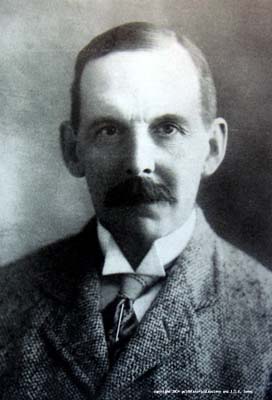
When he arrived in New York from England in 1920, W. Herbert Fowler was already a long time Royal and Ancient amateur golfer, who had won the Jubilee Vase in 1902, and the Bombay Medal in 1903, at St Andrews, and had played on the English golf team of 1903-1905, against Scotland. In his early days he was a crack cricketer, playing for Somerset County. As the dean of the British Experts in golf course architecture, he came to America in January 1920, and headed to California.
Now that the ball-makers have successfully ruined most of our leading courses, it remains for the golf architects to so design the greens that they shall be both difficult of access and that the putting shall demand care and skill in judging slopes and undulations. – W. Herbert Fowler
Mr. Fowler belonged to the following clubs in 1920: Royal and Ancient, Royal North Devon, The Honourable Company of Edinburgh Golfers, Royal St. George’s, Cooden Beach, Burnham, Somerset, and Walton Heath, where he was also manager. Fowler was also a long time director of the Royal and Ancient.
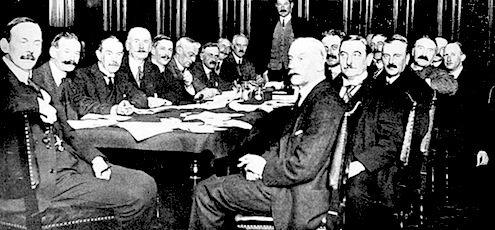
William Herbert Fowler’s home club, and course design masterpiece, was Walton Heath Golf Club, which, when it opened in 1904, was the longest golf course in England, just as the Haskel Ball was changing the game, and making the old golf courses obsolete. The legendary James Braid was Walton Heath’s head professional.
The outstanding features of the seventeenth hole at Walton Heath are more grandiose, their creator – Herbert Fowler – being of Anakim. No doubt he was assisted by recollections of the seventh hole at St. Andrew’s in the good old days before the short cut to it on the right of the hills was opened up. Then it was necessary to pick up a long second with a brassie or cleek, steering the ball home to the left of Strath, and not too much to the left lest it be caught in the sand by the Eden. It is hardly too much to say that the measure of glory which has departed from St. Andrew’s is preserved at Walton Heath. – The Professional Golfers of America, August 1920
Between 1920 and 1923, Herbert Fowler traveled between San Francisco and Los Angeles, remodeling and designing many of the great golf courses of California, including; the Burlingame Country Club, the Presidio of San Francisco, Menlo Country Club, Sacramento Country Club, Lincoln Park Municipal, Olympic Club, Crystal Springs Country Club, Sequoyah Country Club, Victoria Club, Los Angeles Country Club – North and South, Rancho Golf Club, Del Monte No.1, and Del Monte No.2 at Pebble Beach.
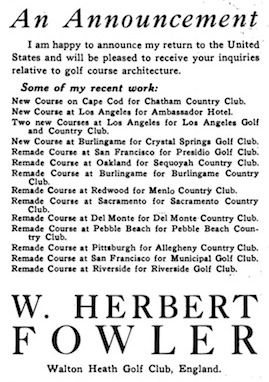
Fowler remodeled the historic, William Robertson designed, Del Monte No.1 golf links, nine holes at a time, starting early in 1920. By April he had also made a plan for lengthening the troubled Del Monte No.2, at Pebble Beach, which was considered too short for the big hitters, with only holes; 2, 6, and 14, up to the challenge. Surprisingly, this was deemed necessary, despite the many alterations made to both courses from 1918 through 1919 by the Del Monte Country Club Green Committee, led by Francis McComas, Douglas Grant and Charles E. Maud. Less than a month before Fowler arrived to remodel Del Monte No. 1 and 2, the Green Committee announced that both golf courses had never been in better shape!
It was Douglas Grant of Burlingame, the son of a wealthy merchant in San Francisco, a Yale graduate, who had married the daughter of Sir William Rutherford, the Mayor of Liverpool, who helped bring W. Herbert Fowler to California. Grant lived in England from 1910 to 1915, mainly for his golf game. His home course was Herbert Fowler’s Walton Heath Golf Club, where James Braid was his teacher. He also played at Royal St. George’s, and at other clubs around London, and in the south of France. He entered many major amateur and Open events during those years, and was well known in the press. In 1912 he beat John Ball in the Irish championship.
Bernard Darwin, who called Fowler “perhaps the most daring and original of all golfing architects”, recalled meeting Grant, the smooth swinging Californian, at Woodcote Park, the sensational new golf course Fowler built for the Royal Automobile Club in 1915.
Douglas Grant is credited with co-designing Del Monte No. 2 at Pebble Beach with Jack Neville. He returned to California from England in January 1916. On his first visit to Del Monte in February, he was said to have said that the land at Pebble Beach was “some of the best he has ever seen for the construction of a course. It is very probable that the Del Monte management will start the construction of a new course at the seaside resort in the very near future.”
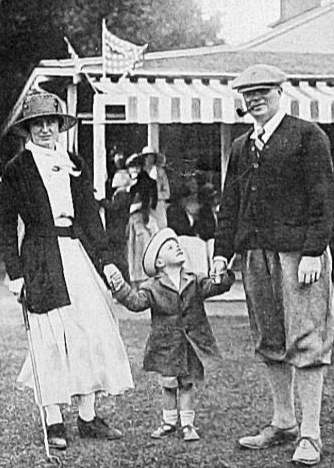
Grant, left San Francisco with his family, and headed back to live at Walton Heath, in October, 1919. One can imagine the conversation Grant and Fowler had back in England, concerning the latter’s upcoming trip to California in the new year, where he would be remodeling Grant’s home courses; the Burlingame Country Club, and Del Monte No.1 and No. 2 at Pebble Beach!
According to Hay Chapman, in the San Francisco Chronicle, W. Herbert Fowler’s 1920-1922 alterations to the Pebble Beach links included:
New back tees added to holes 2,6,9,10,11,13 & 18.
New greens built for holes 1,7,9 & 12.
New traps added to holes 1 & 17.
Hole 5 was also straightened.
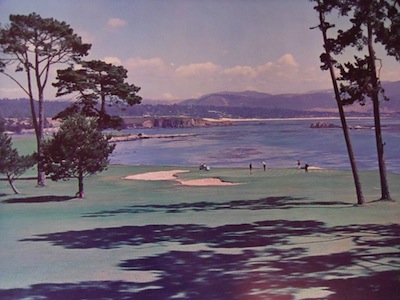
In the summer of 1922, Fowler’s most radical alteration was the building of a new raised green in front of the Lodge. With a raised tee, calling for an accurate shot with the ocean as a hazard, it makes a 535 yard hole. The fairway has been widened and it will be a big improvement over the eighteenth of last year, creating what many say is one of the finest finishing holes in golf.
The final W. Herbert Fowler updates at Pebble Beach were completed for the 1923 Del Monte summer season:
New tee at 2, lengthening the hole from a par 4 to a par 5
New tee and green at 3.
New larger tee at 4.
New tees at 5 and 6, ten yards added.
New tee at 10, moved to the right to tempt the long hitters
New tee at 13.
New tee and green at 14, lengthening it from a par 4 (430) to a par 5 (580), the longest hole in the state
New larger tee at 15.
New green at 16, hogback removed.
W. Herbert Fowler at Del Monte No.2, Pebble Beach by J.I.B. Jones
All rights reserved. ©Copyright 2010-2017 golfhistoricalsociety and J.I.B. Jones
